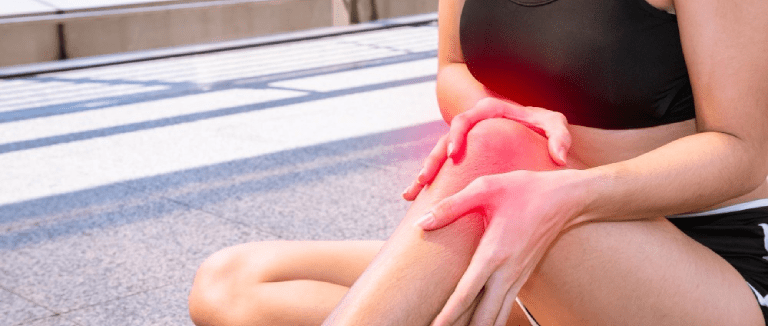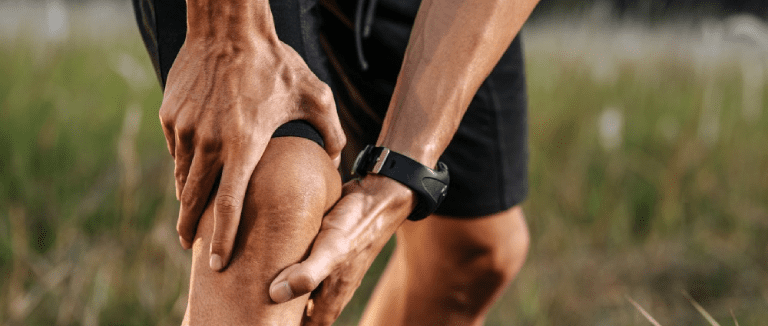Understanding Bursitis of the Knee: Causes, Symptoms, and Effective Treatments
Understanding and managing Bursitis Of The Knee is essential for maintaining joint health and ensuring comfortable, unrestricted mobility. Bursitis Of The Knee can significantly hinder daily activities, making it important to recognize its causes, symptoms, and effective management strategies to prevent chronic discomfort and avoid complications. The knee bursa acts as a cushion for the joint; therefore, any inflammation or irritation leads to pain, swelling, and restricted movement.
Learning about Bursitis Of The Knee enables individuals to take timely measures, such as rest, therapeutic exercises, and, when necessary, medical treatments, to reduce its impact. This comprehensive guide highlights the importance of understanding Bursitis Of The Knee, empowering individuals to manage this condition effectively and restore optimal knee function and comfort.

The Knee Bursa: Its Role And Function
The knee bursa, a vital component of the knee's intricate anatomy, is a protective mechanism for joint movement and stability. Situated strategically around the knee joint, these tiny, fluid-filled sacs known as bursae act as cushions, reducing friction between bones, tendons, and muscles. These sacs contain a lubricating fluid that facilitates smooth movement within the joint, allowing tendons and muscles to glide seamlessly without excessive rubbing or wear.
Specifically, the fluid on the knee performs the essential function of reducing mechanical stress during motion, thus preventing damage and ensuring the joint's functionality. Any inflammation or irritation in these bursae disrupts this cushioning effect, leading to discomfort and restricted movement.
You can trust Liv Hospital in Turkey for comprehensive knee bursitis treatment and compassionate support.
What Is Bursitis Of The Knee?
Bursitis is a condition marked by inflammation of the bursae. When it occurs in the joints of the legs, it is referred to as knee bursitis”a condition that affects the fluid-filled sacs surrounding the knee. Knee bursitis typically develops due to overuse or direct trauma to the knee area. The bursae become inflamed when exposed to constant pressure or repetitive motions, such as kneeling, prolonged crawling, or frequent knee bending.
Additionally, underlying conditions like osteoarthritis, gout, or infection can contribute to the development of bursitis. When the bursae in the knee become irritated or inflamed, usually because of overuse or injury, their role as friction-reducing cushions is compromised. This results in swelling, tenderness, and pain in the affected area. The inflammation also causes an accumulation of excess fluid within the bursa, leading to discomfort and restricted movement.
For dedicated care of knee bursitis, you can visit the renowned Liv Hospital in Istanbul.
Signs And Symptoms Of Knee Bursitis
Knee bursitis manifests through several noticeable symptoms that significantly impact an individual's daily activities. Common indicators of knee bursitis include localized pain, often described as aching or throbbing, centered around the affected bursa. Accompanying the discomfort is swelling around the knee, particularly at the site of the inflamed bursa, which might lead to warmth and redness in the area.
The swelling can restrict movement, making walking, climbing stairs, or bending the knee particularly challenging. Tenderness and sensitivity to touch over the inflamed bursa are also prevalent symptoms. This discomfort and limitation in mobility can disrupt daily routines, affecting work, exercise, and even simple tasks like getting up from a chair or tying shoelaces.
You can experience expert treatment for knee bursitis at Liv Hospital in Turkey.

Diagnosing Knee Bursitis
Diagnosing knee bursitis involves a comprehensive assessment, often beginning with a thorough physical examination conducted by a healthcare professional. During this examination, the doctor will evaluate the affected knee, assessing for signs of swelling, tenderness, warmth, and restricted movement. The medical history of the individual, including details about recent activities or injuries, is also considered. To confirm the diagnosis and rule out other potential issues, the doctor might recommend imaging tests such as X-rays, ultrasounds, or, in some cases, MRI scans. These tests help visualize the affected bursa and surrounding structures, enabling a more precise evaluation of the extent of inflammation and any associated damage.
You can choose Liv Hospital in Istanbul for tailored, patient-centered knee bursitis treatment.
Effective Bursitis Treatment Options
Managing knee bursitis effectively often begins with conservative treatments to alleviate symptoms and promote healing. Rest, allowing the affected knee to recover, is a cornerstone of treatment, reducing strain and minimizing further irritation. Combining rest with ice and elevation helps reduce pain and swelling, providing much-needed relief. Anti-inflammatory medications, such as nonsteroidal anti-inflammatory drugs (NSAIDs), are often recommended to mitigate pain and reduce the inflammation around the affected bursa. In more severe cases of knee bursitis, particularly when symptoms persist or worsen, healthcare providers may consider corticosteroid injections. These injections target the inflamed bursa, significantly decreasing inflammation and relieving pain and swelling.
You may experience excellence in knee bursitis care at Liv Hospital in Turkey.
Clinical Treatment For Knee Bursitis
In cases of persistent or severe knee bursitis that do not respond to conservative treatments, clinical interventions, including surgical procedures, may be considered to alleviate chronic discomfort. One such surgical option involves a bursectomy, a procedure aimed at removing the affected bursa. This surgical intervention targets the removal of the inflamed bursa, aiming to eliminate the source of irritation and reduce symptoms. The procedure involves excising the bursa, followed by a careful healing process. Though this surgical approach can effectively relieve chronic bursitis, it is essential to note that removing the bursa does not impair the knee joint's overall function, as nearby tissues can compensate for the absence of the bursa.
You can find relief and renewed mobility at Liv Hospital in Istanbul.
* Liv Hospital Editorial Board has contributed to the publication of this content .
* Contents of this page is for informational purposes only. Please consult your doctor for diagnosis and treatment. The content of this page does not include information on medicinal health care at Liv Hospital .
For more information about our academic and training initiatives, visit Liv Hospital Academy
Frequently Asked Questions
What causes Bursitis of the Knee?
Bursitis of the Knee often develops from repetitive movements, prolonged kneeling, or direct trauma. It can also result from underlying conditions such as arthritis, gout, or infections.
What are the main symptoms of Knee Bursitis?
Common symptoms include pain, swelling, tenderness, and warmth around the knee joint. Movement may become difficult due to inflammation and fluid buildup in the bursa.
Can Bursitis of the Knee heal on its own?
Mild cases can improve with rest, ice application, and activity modification. However, chronic or severe cases may require medical treatment or physical therapy at specialized centers such as Liv Hospital.
How is Knee Bursitis diagnosed?
Diagnosis involves a physical examination, medical history review, and imaging tests like X-rays or MRI to assess inflammation and rule out other knee conditions.
What is the best treatment for Bursitis of the Knee?
Initial treatment includes rest, ice, and anti-inflammatory medications. Severe cases may need corticosteroid injections or minor surgical procedures like bursectomy.
How long does it take for Knee Bursitis to heal?
Recovery time varies by severity. Mild inflammation can resolve within a few weeks, while chronic cases may take longer and require ongoing medical supervision.
Can exercise worsen Bursitis of the Knee?
High-impact or repetitive movements can worsen symptoms. Low-impact exercises and physical therapy tailored to your condition can help strengthen the joint safely.
When should I see a doctor for Knee Bursitis?
If pain, swelling, or mobility issues persist despite home care, or if redness and fever occur, medical evaluation is necessary to prevent complications.
Is surgery necessary for Bursitis of the Knee?
Surgery is rarely needed but may be recommended if conservative treatments fail. Procedures like bursectomy effectively remove the inflamed bursa for lasting relief.
Why choose Liv Hospital for Knee Bursitis treatment?
Liv Hospital in Turkey provides expert orthopedic care, advanced imaging, and personalized rehabilitation programs designed to relieve pain, restore mobility, and prevent recurrence.


